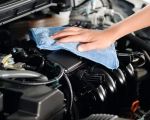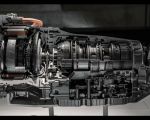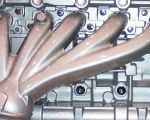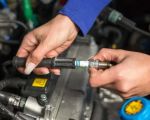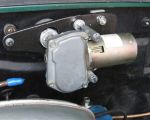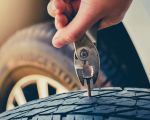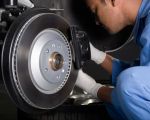How to Fix a Car That Won't Start with a Jump Start: A Step-by-Step Guide
- Understanding Jump Starting and Why It Works
- Why a Jump Start May Not Work: Common Issues
- Alternative Solutions to Jump Starting a Car
- Real-Life Case Study: A Car That Won't Start Even After a Jump Start
- When to Call for Professional Help
- Choosing the Right Towing Service for Jump Start Failures
1. Understanding Jump Starting and Why It Works
Jump starting a car involves using another vehicle’s battery to give your car’s battery the charge it needs to start. When your car’s battery is dead or too weak to start the engine, jump-starting it can provide enough of a boost to get the engine running again. This process relies on connecting jumper cables between your car's battery and another car's battery, allowing electricity to flow and charge the dead battery temporarily.
The key principle behind jump starting is that a charged battery can transfer power to a drained battery, which is often enough to kick-start the car’s engine. If your car doesn’t start after a jump start, it’s important to consider the potential underlying causes and address them appropriately.
2. Why a Jump Start May Not Work: Common Issues
Even though jump starting is a common and effective solution, there are several reasons why it may not work. Below are some common reasons why a car may fail to start after a jump start:
- Faulty Battery: One of the most common reasons a jump start might fail is that your battery is completely dead or damaged. Over time, batteries lose their ability to hold a charge, and in some cases, a jump start won’t be enough to get the car running.
- Bad Alternator: The alternator is responsible for charging your battery while the engine is running. If the alternator is faulty, it will prevent the battery from charging, and even after a jump start, your car will not stay running for long.
- Loose or Corroded Battery Terminals: If the battery terminals are dirty, corroded, or loose, the connection between the jumper cables and your car’s battery may not be strong enough to transfer the necessary power. Clean and tighten the connections before trying a jump start again.
- Starter Motor Problems: If there’s an issue with the starter motor, a jump start may not work. The starter motor is responsible for turning the engine over, and if it's faulty, even a fully charged battery won’t be able to start the car.
- Inadequate Jump Start: Sometimes, jump-starting doesn’t work if the other vehicle isn’t running long enough or doesn’t provide enough charge. In these cases, a longer wait may be required, or the cables might not be connected properly.
By identifying the root cause of the issue, you can determine whether a jump start is sufficient or if you need further repairs or professional help.
3. Alternative Solutions to Jump Starting a Car
If a jump start fails, don’t panic. There are alternative solutions that can help get your car running again. Below are some options to consider:
- Battery Replacement: If your battery is old, worn out, or beyond the point of charging, replacing it with a new one is the best solution. You can have your battery replaced at a local mechanic or even at home if you have the necessary tools and knowledge.
- Alternator Repair: If the alternator is the problem, you may need to have it replaced or repaired. A bad alternator will prevent your car from maintaining a charge, so even after a jump start, the car will likely stall again shortly after the engine is turned off.
- Checking for Fuel Issues: Sometimes, a car may not start due to a fuel-related issue. Ensure that your car has enough fuel in the tank, and check for potential fuel system problems. If the fuel pump or filter is clogged, it may prevent your car from starting even after a jump start.
- Jump Starting Again: In some cases, a jump start might need to be repeated, especially if the battery is deeply discharged. If the initial jump didn’t work, consider waiting a bit longer for the battery to charge or asking for help from another vehicle.
If these alternatives don’t resolve the issue, it’s best to seek professional assistance to avoid causing further damage to your car.
4. Real-Life Case Study: A Car That Won’t Start Even After a Jump Start
Meet James, a driver who encountered an issue with his car that wouldn't start despite multiple attempts to jump start it. James had been driving all day and noticed that his headlights were dimming. By the time he pulled into his driveway, his car wouldn’t start at all. After trying a jump start using his neighbor’s car, the engine sputtered but wouldn’t fully turn over.
James checked the battery terminals for corrosion and found that they were clean. However, after inspecting his alternator and having it tested, he discovered it had failed. His alternator was not charging the battery properly, causing the jump start to be ineffective. After replacing the alternator, the car started up with no issues, and James was back on the road.
This case highlights the importance of diagnosing the root cause of your car’s starting issues. While a jump start is a great first step, it’s essential to check for other issues that could be preventing your car from starting properly.
5. When to Call for Professional Help
If a jump start doesn’t work and you’re unsure why, it’s time to call for professional help. A mechanic or roadside assistance service can accurately diagnose the issue and suggest the necessary repairs. It’s better to be safe and seek help early on to prevent further damage to your car and avoid getting stranded on the road.
Additionally, if you find yourself in an unsafe situation, such as on the side of a busy highway, it’s always best to call for professional help. Many towing companies offer emergency roadside assistance, including jump starting and towing services, so you don’t have to deal with a dead battery alone.
6. Choosing the Right Towing Service for Jump Start Failures
If you’ve tried jump-starting your car and it still won’t start, it’s time to consider a towing service. When choosing a towing service, look for a provider that offers 24/7 emergency assistance and specializes in roadside services like jump starting. Professional towing companies, like Rescue & Towing, can quickly dispatch a technician to your location, diagnose the problem, and even tow your vehicle to a nearby mechanic if necessary.
Choosing the right service is crucial, as a reliable company will ensure your safety and help you get back on the road as soon as possible. With years of experience, Rescue & Towing provides trustworthy service and expert solutions for a variety of roadside issues, including jump-starting, flat tires, and more.















